Spring is in full swing. And, that means that flowers are in bloom.
[caption id="attachment_6736" align="alignnone" width="640"]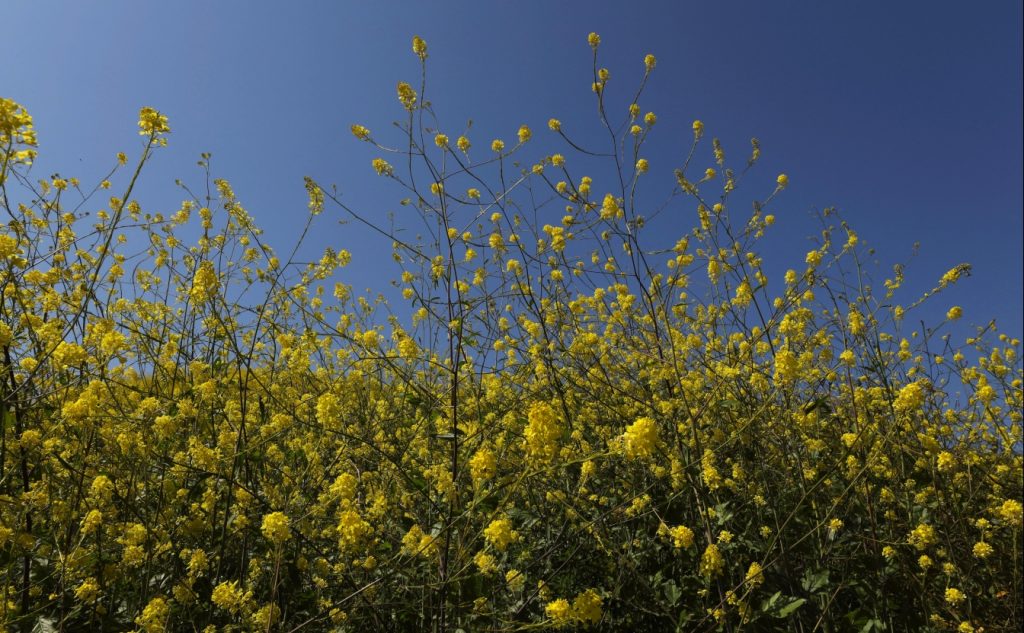 Photo: Ian Santer[/caption]
Lots, and lots of flowers to be more specific.
Thanks to social media, parks, preserves, and trails across California have seen a substantial increase in attendance between March and July. And, this year, certain areas were overwhelmed with visitors eager to see experience the superbloom.
While social media has encouraged people to get out and experience nature, there's been some downsides.
[caption id="attachment_6738" align="alignnone" width="640"]
Photo: Ian Santer[/caption]
Lots, and lots of flowers to be more specific.
Thanks to social media, parks, preserves, and trails across California have seen a substantial increase in attendance between March and July. And, this year, certain areas were overwhelmed with visitors eager to see experience the superbloom.
While social media has encouraged people to get out and experience nature, there's been some downsides.
[caption id="attachment_6738" align="alignnone" width="640"]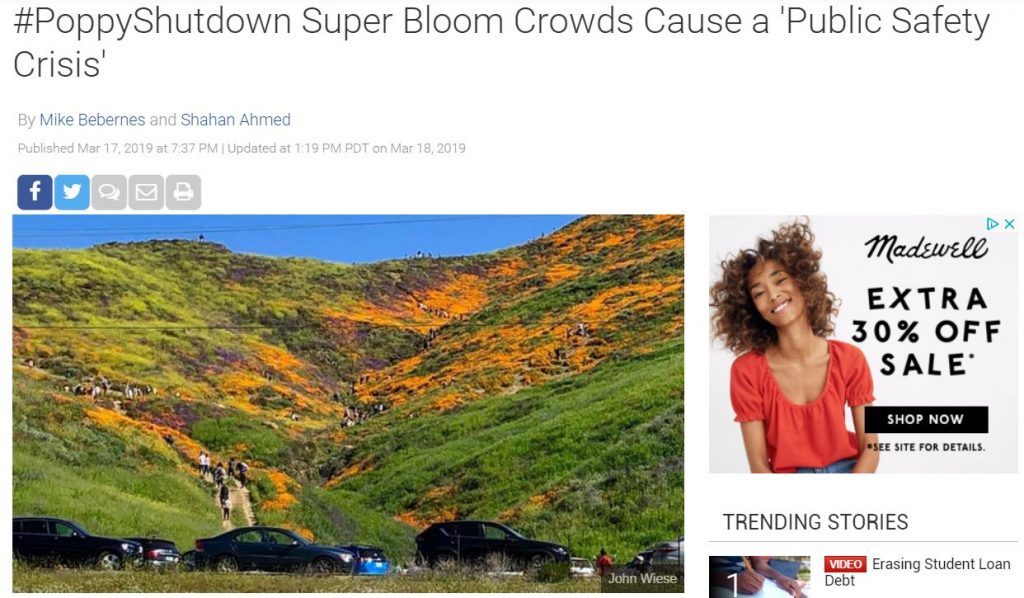 Via NBC San Diego[/caption]
Small, quiet towns, like Lake Elsinore, saw not only bumper to bumper traffic; park officials witnessed visitors causing damage to the flower fields. So much so that Walker Canyon had to be temporarily shut down.
Via NBC San Diego[/caption]
Small, quiet towns, like Lake Elsinore, saw not only bumper to bumper traffic; park officials witnessed visitors causing damage to the flower fields. So much so that Walker Canyon had to be temporarily shut down.
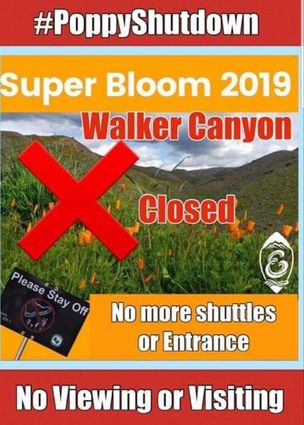 Yes, a field of flowers makes for a very nice picture. However, there are ways to "do it for the gram" while ensuring that future generations will be able to enjoy them as well.
Here's how...
Yes, a field of flowers makes for a very nice picture. However, there are ways to "do it for the gram" while ensuring that future generations will be able to enjoy them as well.
Here's how...
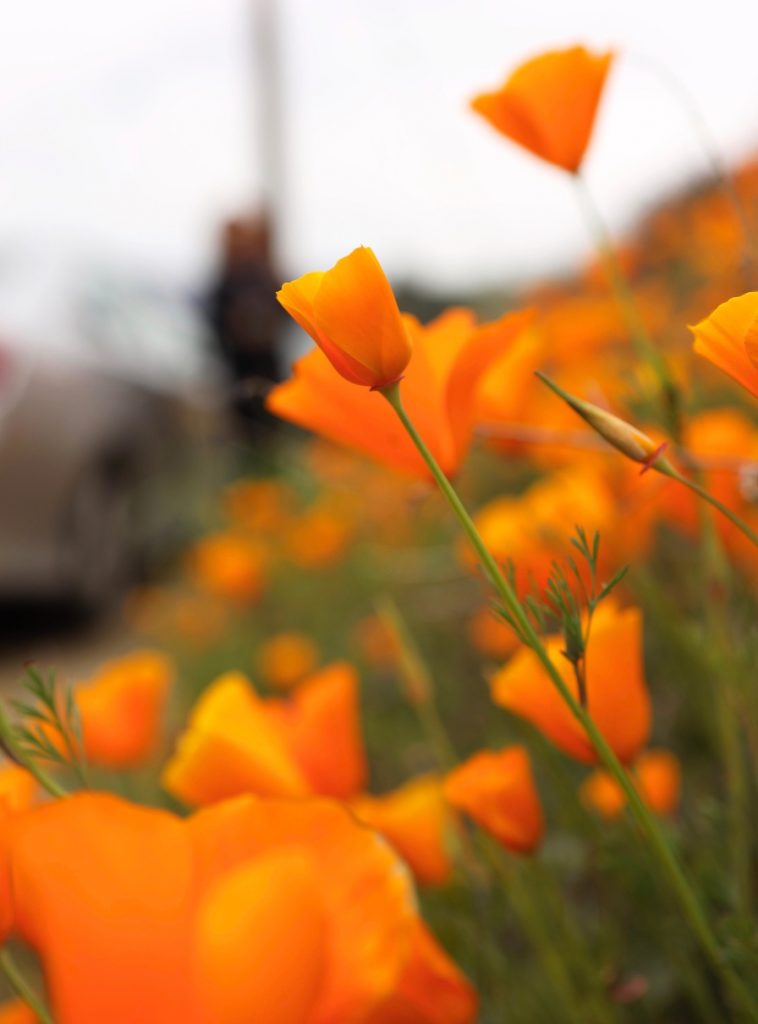 Photo: Ian Santer[/caption]
There's no need to overcrowd one park or field. There are numerous locations across the state where nature enthusiasts and photographers can view superblooms. The key to an enjoyable and picturesque experience is going at the right time of year. Websites like Visit California clearly state when and where to view flowers in order of appearance.
Photo: Ian Santer[/caption]
There's no need to overcrowd one park or field. There are numerous locations across the state where nature enthusiasts and photographers can view superblooms. The key to an enjoyable and picturesque experience is going at the right time of year. Websites like Visit California clearly state when and where to view flowers in order of appearance.
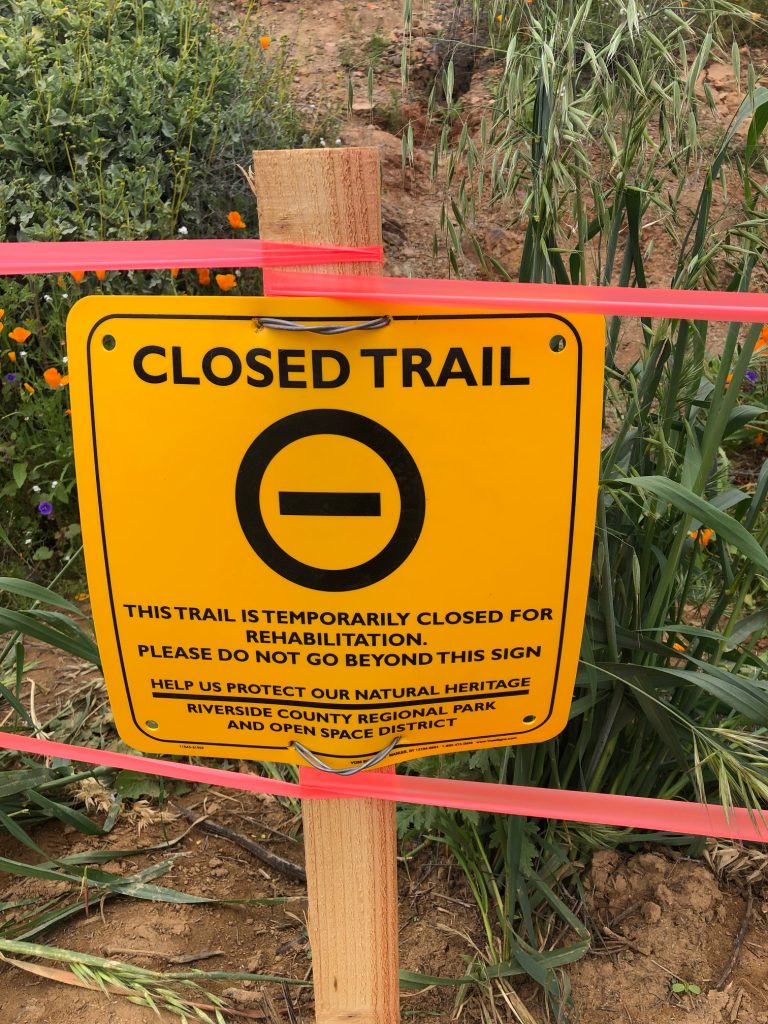 Photo: Ian Santer[/caption]
The above is an example of an official park sign that was posted everywhere around Lake Elsinore. Even with the bold text, bright color paper, and very visible barriers, some visitors still missed the memo.
[caption id="attachment_6733" align="alignnone" width="640"]
Photo: Ian Santer[/caption]
The above is an example of an official park sign that was posted everywhere around Lake Elsinore. Even with the bold text, bright color paper, and very visible barriers, some visitors still missed the memo.
[caption id="attachment_6733" align="alignnone" width="640"]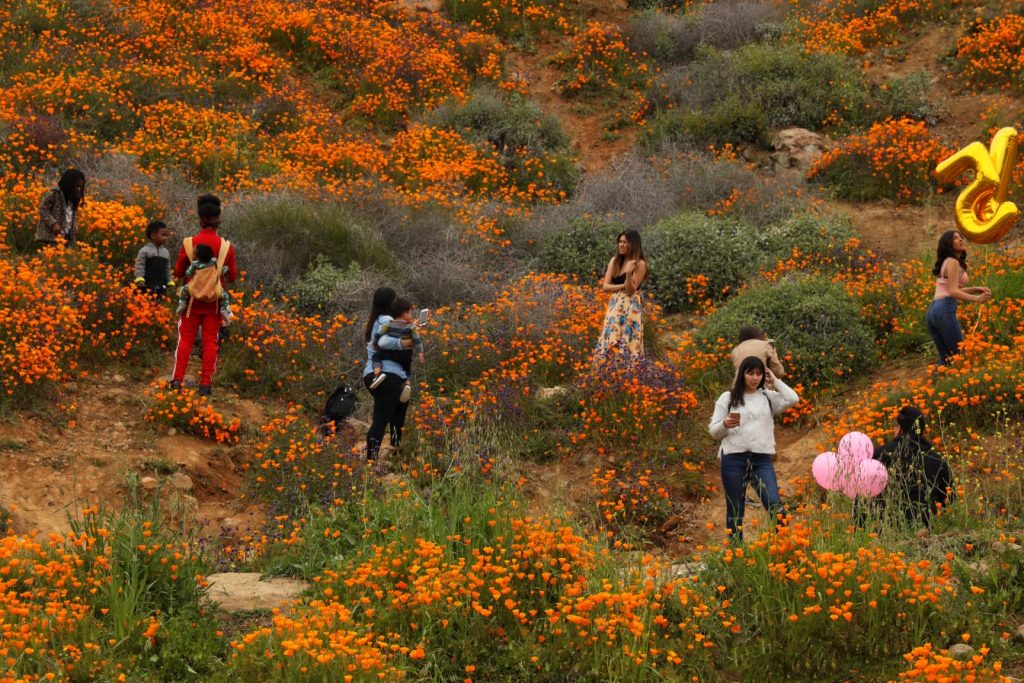 Photo: Ian Santer[/caption]
Various areas are not accessible to the public in order to protect and preserve the blooms. When visiting, please respect park rules and regulations. Furthermore, especially during peak season, park officials are on site to answer questions and can point visitors to safe, designated trails.
Photo: Ian Santer[/caption]
Various areas are not accessible to the public in order to protect and preserve the blooms. When visiting, please respect park rules and regulations. Furthermore, especially during peak season, park officials are on site to answer questions and can point visitors to safe, designated trails.
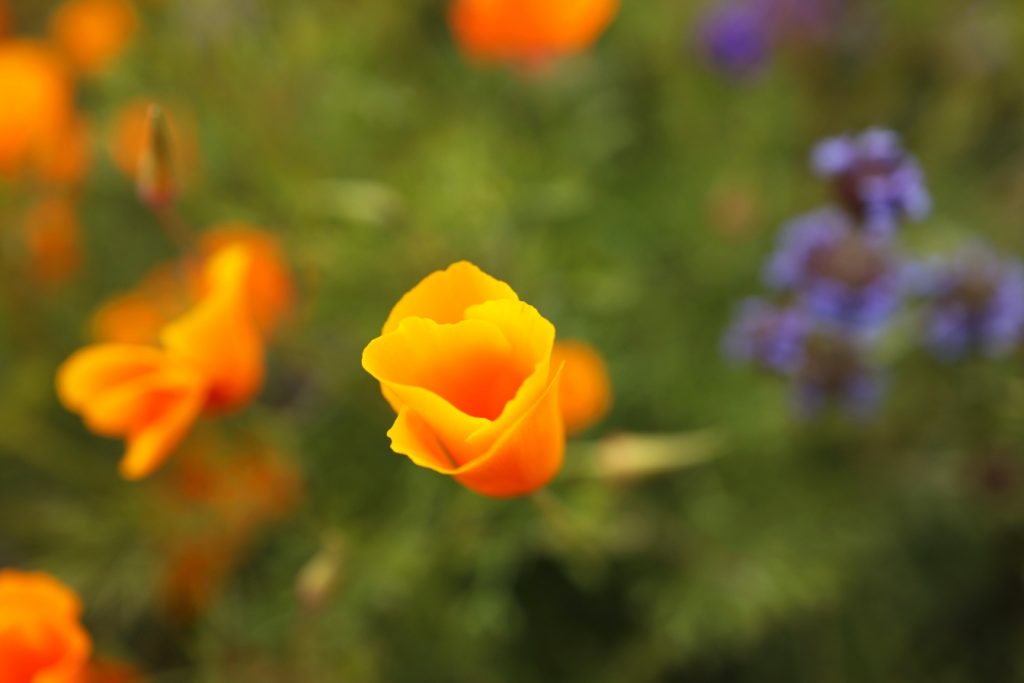 Photo: Ian Santer[/caption]
The lovely photo above, captured with a macro lens, was taken without harming the environment from a designated trail. Now, the scene below...
[caption id="attachment_6742" align="alignnone" width="640"]
Photo: Ian Santer[/caption]
The lovely photo above, captured with a macro lens, was taken without harming the environment from a designated trail. Now, the scene below...
[caption id="attachment_6742" align="alignnone" width="640"]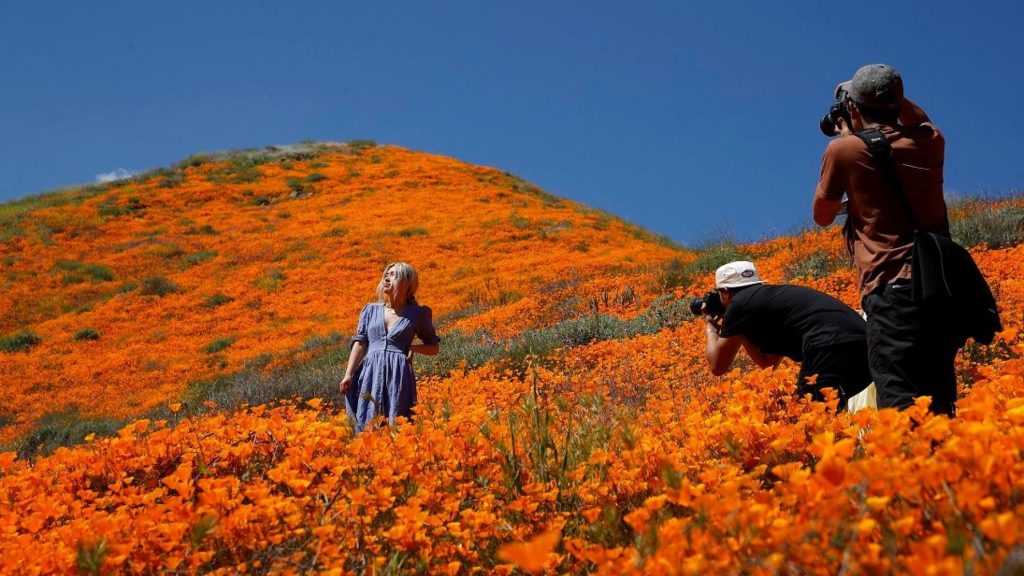 A model poses among wildflowers in bloom Monday, March 18, 2019, in Lake Elsinore, Calif. [Gregory Bull/The Associated Press] via http://bit.ly/2PjNudV[/caption]...is an example of what not to do.
It's possible to get that perfect shot for Instagram without doing irreparable damage to the land. And, that's not an exaggeration. As reported by Los Angeles Magazine:
"Sticking to the trail and not destroying the poppies isn’t just about obeying arbitrary rules. It’s about ensuring that this isn’t the last time this ever happens. When you pluck, cut, crush, or otherwise mangle a poppy flower, you’re risking that it may never return, cutting off a cycle of blossoming and rebirth that has been going on for years. Your content is not worth that. This is one situation where saying that taking a picture it will last longer should never be the case."
If you are a photographer, along with exercising good superbloom etiquette, bringing the right gear will also aid in getting great shots while keeping California fields flourishing seasons after season. Before you head out, pack a macro lens (remember, stay on the trail for those close shots), a long lens (which will provide closer distance to a subject that's far away or not accessible), and a wide lens for those breathtaking landscape shots.
Happy shooting!
A model poses among wildflowers in bloom Monday, March 18, 2019, in Lake Elsinore, Calif. [Gregory Bull/The Associated Press] via http://bit.ly/2PjNudV[/caption]...is an example of what not to do.
It's possible to get that perfect shot for Instagram without doing irreparable damage to the land. And, that's not an exaggeration. As reported by Los Angeles Magazine:
"Sticking to the trail and not destroying the poppies isn’t just about obeying arbitrary rules. It’s about ensuring that this isn’t the last time this ever happens. When you pluck, cut, crush, or otherwise mangle a poppy flower, you’re risking that it may never return, cutting off a cycle of blossoming and rebirth that has been going on for years. Your content is not worth that. This is one situation where saying that taking a picture it will last longer should never be the case."
If you are a photographer, along with exercising good superbloom etiquette, bringing the right gear will also aid in getting great shots while keeping California fields flourishing seasons after season. Before you head out, pack a macro lens (remember, stay on the trail for those close shots), a long lens (which will provide closer distance to a subject that's far away or not accessible), and a wide lens for those breathtaking landscape shots.
Happy shooting!
 Photo: Ian Santer[/caption]
Lots, and lots of flowers to be more specific.
Thanks to social media, parks, preserves, and trails across California have seen a substantial increase in attendance between March and July. And, this year, certain areas were overwhelmed with visitors eager to see experience the superbloom.
While social media has encouraged people to get out and experience nature, there's been some downsides.
[caption id="attachment_6738" align="alignnone" width="640"]
Photo: Ian Santer[/caption]
Lots, and lots of flowers to be more specific.
Thanks to social media, parks, preserves, and trails across California have seen a substantial increase in attendance between March and July. And, this year, certain areas were overwhelmed with visitors eager to see experience the superbloom.
While social media has encouraged people to get out and experience nature, there's been some downsides.
[caption id="attachment_6738" align="alignnone" width="640"] Via NBC San Diego[/caption]
Small, quiet towns, like Lake Elsinore, saw not only bumper to bumper traffic; park officials witnessed visitors causing damage to the flower fields. So much so that Walker Canyon had to be temporarily shut down.
Via NBC San Diego[/caption]
Small, quiet towns, like Lake Elsinore, saw not only bumper to bumper traffic; park officials witnessed visitors causing damage to the flower fields. So much so that Walker Canyon had to be temporarily shut down.
 Yes, a field of flowers makes for a very nice picture. However, there are ways to "do it for the gram" while ensuring that future generations will be able to enjoy them as well.
Here's how...
Yes, a field of flowers makes for a very nice picture. However, there are ways to "do it for the gram" while ensuring that future generations will be able to enjoy them as well.
Here's how...
First, do your research.
[caption id="attachment_6734" align="aligncenter" width="640"] Photo: Ian Santer[/caption]
There's no need to overcrowd one park or field. There are numerous locations across the state where nature enthusiasts and photographers can view superblooms. The key to an enjoyable and picturesque experience is going at the right time of year. Websites like Visit California clearly state when and where to view flowers in order of appearance.
Photo: Ian Santer[/caption]
There's no need to overcrowd one park or field. There are numerous locations across the state where nature enthusiasts and photographers can view superblooms. The key to an enjoyable and picturesque experience is going at the right time of year. Websites like Visit California clearly state when and where to view flowers in order of appearance.
Second, Read and obey posted signs.
[caption id="attachment_6733" align="alignnone" width="640"] Photo: Ian Santer[/caption]
The above is an example of an official park sign that was posted everywhere around Lake Elsinore. Even with the bold text, bright color paper, and very visible barriers, some visitors still missed the memo.
[caption id="attachment_6733" align="alignnone" width="640"]
Photo: Ian Santer[/caption]
The above is an example of an official park sign that was posted everywhere around Lake Elsinore. Even with the bold text, bright color paper, and very visible barriers, some visitors still missed the memo.
[caption id="attachment_6733" align="alignnone" width="640"] Photo: Ian Santer[/caption]
Various areas are not accessible to the public in order to protect and preserve the blooms. When visiting, please respect park rules and regulations. Furthermore, especially during peak season, park officials are on site to answer questions and can point visitors to safe, designated trails.
Photo: Ian Santer[/caption]
Various areas are not accessible to the public in order to protect and preserve the blooms. When visiting, please respect park rules and regulations. Furthermore, especially during peak season, park officials are on site to answer questions and can point visitors to safe, designated trails.
Lastly, Don't pick or lay in the flowers.
[caption id="attachment_6735" align="alignnone" width="640"] Photo: Ian Santer[/caption]
The lovely photo above, captured with a macro lens, was taken without harming the environment from a designated trail. Now, the scene below...
[caption id="attachment_6742" align="alignnone" width="640"]
Photo: Ian Santer[/caption]
The lovely photo above, captured with a macro lens, was taken without harming the environment from a designated trail. Now, the scene below...
[caption id="attachment_6742" align="alignnone" width="640"] A model poses among wildflowers in bloom Monday, March 18, 2019, in Lake Elsinore, Calif. [Gregory Bull/The Associated Press] via http://bit.ly/2PjNudV[/caption]...is an example of what not to do.
It's possible to get that perfect shot for Instagram without doing irreparable damage to the land. And, that's not an exaggeration. As reported by Los Angeles Magazine:
"Sticking to the trail and not destroying the poppies isn’t just about obeying arbitrary rules. It’s about ensuring that this isn’t the last time this ever happens. When you pluck, cut, crush, or otherwise mangle a poppy flower, you’re risking that it may never return, cutting off a cycle of blossoming and rebirth that has been going on for years. Your content is not worth that. This is one situation where saying that taking a picture it will last longer should never be the case."
If you are a photographer, along with exercising good superbloom etiquette, bringing the right gear will also aid in getting great shots while keeping California fields flourishing seasons after season. Before you head out, pack a macro lens (remember, stay on the trail for those close shots), a long lens (which will provide closer distance to a subject that's far away or not accessible), and a wide lens for those breathtaking landscape shots.
Happy shooting!
A model poses among wildflowers in bloom Monday, March 18, 2019, in Lake Elsinore, Calif. [Gregory Bull/The Associated Press] via http://bit.ly/2PjNudV[/caption]...is an example of what not to do.
It's possible to get that perfect shot for Instagram without doing irreparable damage to the land. And, that's not an exaggeration. As reported by Los Angeles Magazine:
"Sticking to the trail and not destroying the poppies isn’t just about obeying arbitrary rules. It’s about ensuring that this isn’t the last time this ever happens. When you pluck, cut, crush, or otherwise mangle a poppy flower, you’re risking that it may never return, cutting off a cycle of blossoming and rebirth that has been going on for years. Your content is not worth that. This is one situation where saying that taking a picture it will last longer should never be the case."
If you are a photographer, along with exercising good superbloom etiquette, bringing the right gear will also aid in getting great shots while keeping California fields flourishing seasons after season. Before you head out, pack a macro lens (remember, stay on the trail for those close shots), a long lens (which will provide closer distance to a subject that's far away or not accessible), and a wide lens for those breathtaking landscape shots.
Happy shooting!






